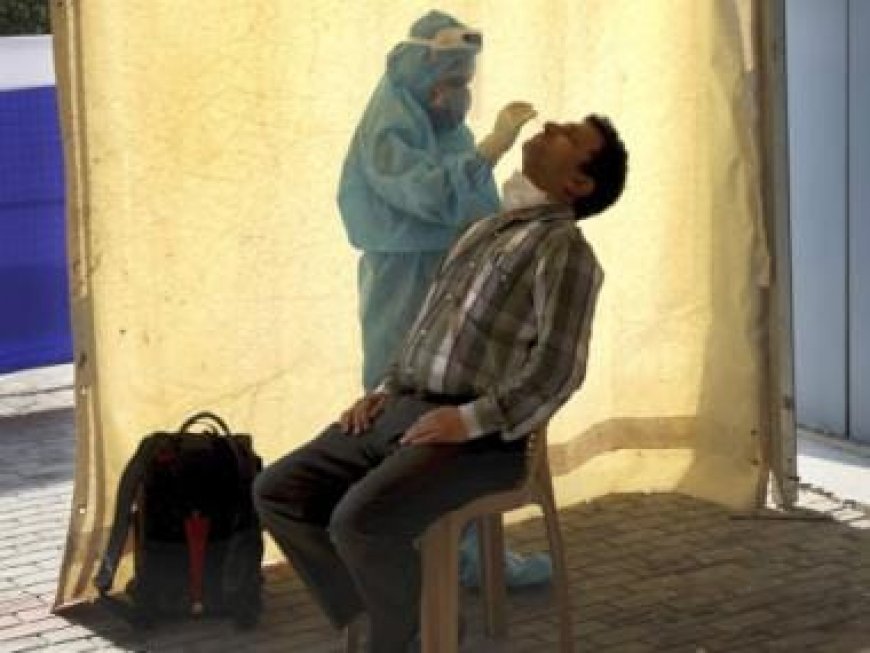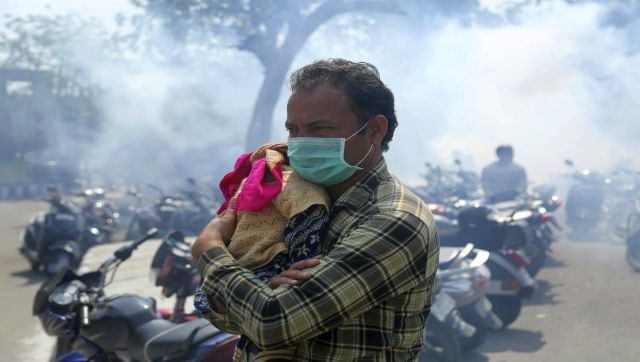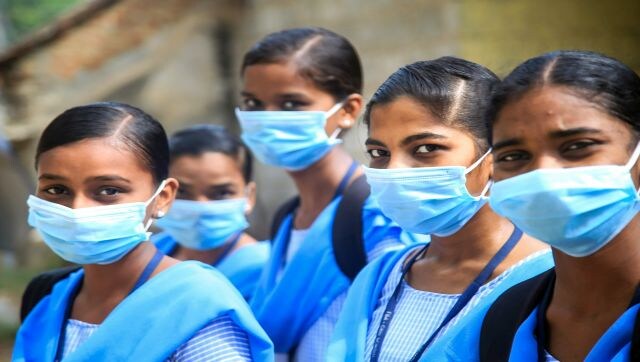JN.1 COVID strain a ‘variant of interest’: What are its symptoms?
JN.1 COVID strain a ‘variant of interest’: What are its symptoms?

Amid the festive season, COVID-19 has reared its ugly head once again. The number of coronavirus infections across the globe is seeing an uptick with many attributing the rise to COVID-19 sub-variant JN.1.
On Tuesday, reacting to the rise in cases, the World Health Organization (WHO) classified it as a “variant of interest” separate from its ancestor BA.2.86 that is commonly referred to as Pirola. “Due to its rapidly increasing spread, WHO is classifying the variant JN.1 as a separate variant of interest (VOI) from the parent lineage BA.2.86,” said a statement from the inter-government body. It was previously considered to be a VOI as a part of Pirola sub-lineages.
But what does it mean to be a ‘variant of interest’? How dangerous is the JN.1 variant? What risk does it pose to public health?
Here’s what we know.
WHO declares JN.1 a ‘variant of interest’
On Tuesday, the WHO classified the JN.1 variant, which is a descendant of the Pirola strain and was first detected in the world in Luxembourg, as a ‘variant of interest’.
The world health agency said that it was previously classified as a variant of interest as part of BA.2.86 sublineages. In its statement, it said, “Based on the available evidence, the additional global public health risk posed by JN.1 is currently evaluated as low. Despite this, with the onset of winter in the Northern Hemisphere, JN.1 could increase the burden of respiratory infections in many countries.
“WHO is continuously monitoring the evidence and will update the JN.1 risk evaluation as needed.”
NEW: #COVID19 variant of interest JN.1
Due to its rapidly increasing spread, WHO is classifying the variant JN.1 as a separate variant of interest (VOI) from the parent lineage BA.2.86. It was previously classified as VOI as part of BA.2.86 sublineages.
Based on the available… pic.twitter.com/lvyd3sq1f7
— World Health Organization (WHO) (@WHO) December 19, 2023
According to the WHO, a VOI is a COVID variant with the capability that affects characteristics of the virus such as disease severity, immune escape, transmissibility and diagnostic escape. Moreover, a VOI causes a consequential volume of community transmission. A global increase in cases poses a risk of large proportions to worldwide public health.
On the other hand, a variant of concern translates to a rise in transmissibility, an increase in fatality and a significant decrease in effectiveness of vaccines, therapy and other health measures.
Since the beginning of the pandemic, the WHO has been classifying strains as VOIs or VOCs. The Delta variant – initially detected in India in December 2020 – the B.1.621 or the Mu variant, Omicron, the EG.5 or Eris variant have all been termed as VOIs according to the WHO.
Why JN.1 is a worry
Since first detected in Luxembourg in August, the JN.1 sub-variant has quickly made its way around the world, spreading to over 30 countries. Cases of the sub-variant have been found in China, the United States, England, France, Singapore and event India.
In fact, data released by the US Centers for Disease Control and Prevention (CDC) reveals that in the two-week period ending on 9 December, while HV.1 accounted for about 30 per cent of COVID-19 cases in the US, it was the JN.1 sub-variant, which was the second-most prevalent strain, making up about 21 per cent of cases, followed by EG.5.
In fact, as recently as 14 December, the CDC said, “The continued growth of JN.1 suggests that it is either more transmissible or better at evading our immune systems.”
Across the globe, there’s been a surge in COVID cases, with many experts attributing it to the detection of the JN.1 virus. For instance, China has reported several JN.1 cases in the recent weeks. Similarly, three days ago, Singapore recorded a whopping 56,000 more cases in a week, leading the Health Ministry to issue an advisory for citizens and travellers. An estimated number of 56,043 cases COVID-19 cases were recorded in the week of 3 to 9 December, rising from 32,035 cases in the previous week, according to the ministry.
In India, the first case of JN.1 was identified in a positive RT-PCR sample in Karakulam of Thiruvananthapuram district in Kerala, on 8 December. And on Wednesday, 19 more cases have been detected in Goa with state epidemiologist Dr Prashant Suryavanshi confirming the same.
Overall, the country also reported 142 new cases of COVID-19 on Tuesday with the active caseload rising to 1,970, according to Union Health Ministry data. Kerala, which was the state where the first sub-variant was detected, also saw an increase of 115 COVID cases in a day and the total active cases in the state stood at 1,749.
And in wake of this surge, the Centre has issued an advisory asking for states and Union Territories to step up testing and vigilance. The central government has asked all the states to monitor and report District-wise Influenza-like Illness (ILI) and Severe Acute Respiratory Illness (SARI) cases in all health facilities on a regular basis including in the Integrated Health Information Platform (IHIP) portal.
Moreover, Karnataka has issued a mask mandate for over 6o-year-olds and those with co-morbidities.

Symptoms and signs of JN.1 to look out for
With COVID rearing its ugly head again, many wonder if JN.1 has different symptoms to watch out for. The WHO has said that the symptoms associated with the new COVID variant are generally mild to moderate and may include fever, runny nose, sore throat, and headaches.
Most patients experience mild upper respiratory symptoms that typically improve within four to five days. Those infected by the new variant may also complain of loss of appetite and persistent nausea. Sudden difficulty feeling hungry, particularly when accompanied by other symptoms, is highlighted as a potential indication of the JN.1 variant, and medical consultation is advised.
Doctors have also flagged extreme fatigue as a significant sign of JN.1. Experts note that it goes way beyond the usual COVID-19 fatigue and basic tasks may feel monumental, and individuals experiencing such fatigue should seek medical evaluation.
In rare cases, individuals infected with the JN.1 variant may also experience gastrointestinal problems, leading to alterations in digestive health. Symptoms such as vomiting and nausea may occur.

COVID vaccines against JN.1
And as cases rise, people are asking if previous vaccinations will protect them from the sub-variant. Doctors in India suggest that those above the age of 60 years, or living with conditions such as uncontrolled diabetes and hypertension, chronic kidney disease, heart disease, and liver disease, may consider taking their precaution dose, especially if they are living in or travelling to areas where the infection is in circulation.
However, according to the US Centres for Disease Control and Prevention (CDC), the vaccines will not completely block the JN.1 infections, but will reduce the likelihood of severe illness. Dr Kiran G Kulirankal, Assistant Professor, Division of Infectious Diseases, Amrita Hospital, Kochi was quoted as telling India Today, “The past history of vaccination may also contribute to why the new sub-variant JN.1 has not progressed to cause severe disease. An essential measure in preventing the spread of the disease is to vaccinate the high-risk group, including the elderly, individuals with malignancies, those on immunosuppressive medications, people with uncontrolled diabetes, and patients with chronic liver and kidney diseases.”
With inputs from agencies
What's Your Reaction?



























































